In this guide, you’ll learn exactly how to build the best push pull legs routine you can to achieve the best results possible.
Let’s get started!
On This Page
- What is Push Pull Legs?
- What is the push pull legs split?
- Why use a Push Pull Legs routine?
- 3-4 Day Push Pull Legs Routine
- 5-6 Day Push Pull Legs Routine
- Push Pull Legs Routine For Muscle Growth/Fat Loss
- Rep Range For Muscle Growth/Fat Loss
- 3 Day Push Pull Legs Routine Example
- 4, 5, or 6 Day Push Pull Legs Routine Example
- Progressive Overload For Maximum Progress
- Frequently Asked Questions
- Conclusion
What is Push Pull Legs?
Push pull legs split is a straightforward training method to split your training into 3 primary movement patterns.
The push workout consists of exercises to train the upper body push muscles, the chest, shoulders, and triceps.
The pull day workout aims to train all of the upper body pull muscles; the upper back, lats, and biceps.
The leg workout centers around training the lower body muscles, such as the glutes, quadriceps, hamstrings, and calves.
I’ve been training for a long time and used a different workout split for tons of different goals.
Often, the programs are pretty solid and make sense, depending on what your goals are.
Others haven’t been the best, unfortunately, which is why I wanted to make a change in my training program.
Not only for me but for my clients as well.
They’ve been getting solid results, but I knew there was a better way to improve what we’ve been doing.
Enter the push pull legs or PPL split!
I’ve seen a ton of excellent resources out there on the subject.
However, my goal with this guide is to go over every minute detail of the PPL routine.
That way, you don’t ever have to go searching for answers again. All the information is right here and ready to be shared with anybody that needs help.
If you want to learn all about the push pull legs split, look no further because this is it!
Let’s get started!
What is the push pull legs split?
As I’ve stated above, the push pull legs split consists of splitting up your training program into 3 primary movement patterns.
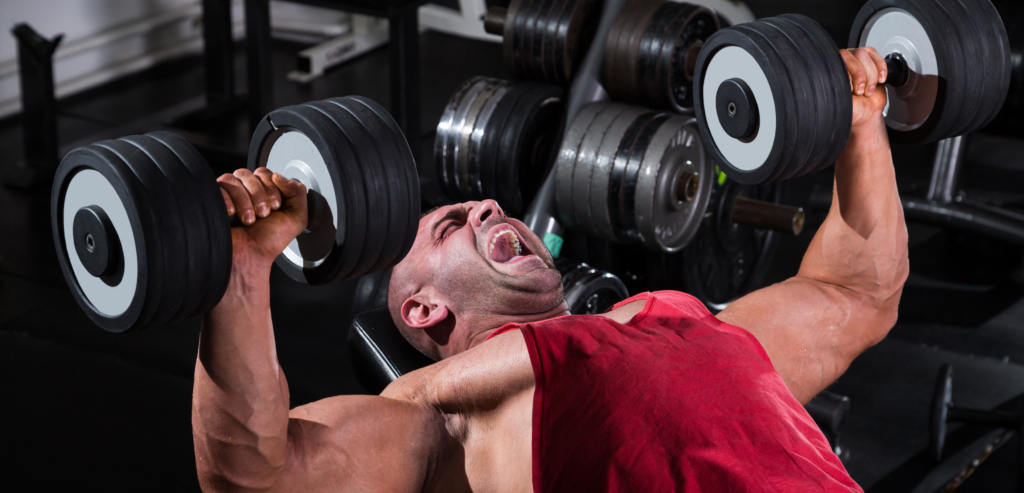
Incline work is crucial for upper body pushing movements. It trains the clavicular head of the pecs, which is essential for muscle and injury prevention.
Push is for the upper body pushing muscles:
- Chest
- Shoulders
- Triceps
- Traps (I recommend traps on the push workout day to pair with your side delts.)

If you want the biggest and stronger back possible, you better have some kind of heavy rowing variation.
Pull is for the upper body pulling muscles:
- Upper Back
- Lats
- Biceps
- Rear Delts (Rear delts can be done on your pull days or push.)
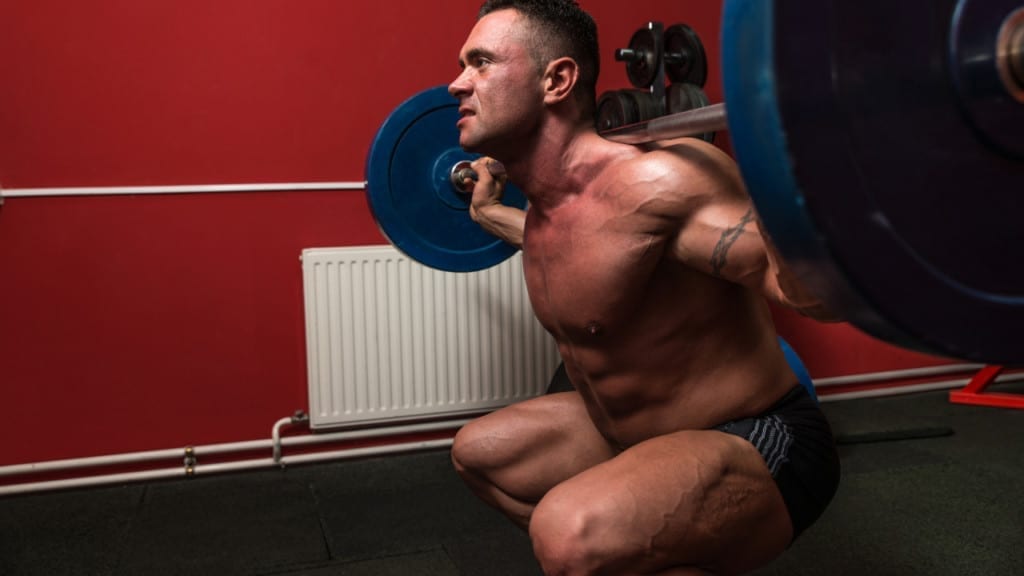
For leg days, doing some kind of high bar squat to train the quads directly is great. Other variations are awesome for training the entire lower body as a unit as well.
Legs are for the, well legs lol.
- Quads
- Hamstrings
- Glutes
- Calves
Why use a Push Pull Legs routine?
Push Pull Legs, or PPL, for short because I’m already tired of writing it, is considered the best way to set up your training sessions by many.
The main reasons why?
- Allows for optimal recovery. Because you’re splitting the body into 3 separate sections, it makes it easy to recover from. If you’re doing full-body 3 times a week, you might not recover from those deadlifts you did the other day, and now it’s time to do barbell rows.
- Programming for long term progress is simple. Setting up a push pull legs training program is easy; you pick 1-2 exercises per body part and get stronger at it over time. You go from 200 for 5 to 200 for 10 on the barbell bench press, and you probably got bigger and stronger. See? Easy.
- It gives you an easy framework to work with based on your goals. If you want to focus on strength, building muscle, or fat loss, a push pull legs routine is incredibly easy to use for whatever goal you may have!
As you can see, no matter what your goal is, you can tailor a PPL routine to suit it instantly.
Now, let’s go over the significant benefits and drawbacks to figure out how many days you should be running a PPL split!
3-4 Day Push Pull Legs Routine
Advantages
- Great for strength. Strength training is all about managing fatigue and staying away from failure. Technique and power output are of utmost importance. Because of this, a 3-4 day push pull legs split is your best bet to focus on getting stronger.
- Much easier to recover from compared to 5-6 day training. The more you can train and recover from, the faster your progress will be. Most people can’t recover from a high-frequency workout split. Plus, most people reading this work full-time jobs and probably don’t want to spend 6 days a week in the gym.
- Perfect for those that have trouble with a higher frequency workout split. If you want to do all the volume in the world and push the intensity, you need to lower your training frequency. You can’t push them all into the red. If you do, you won’t be able to recover, and eventually, your progress will stall. Or you might even regress, which is much worse.
Disadvantages
- Higher volume is required if your goal is muscle hypertrophy. If you only train 3-4 days per week, you’ll need to do more volume each day to make up for it. For most people, 5-10 HARD work sets a week are all you’ll need to stimulate muscle gains. If you don’t want to train really hard (close to and to failure), you will have to do more volume to make up for it.
- Not much room for variation. If you want to do more exercises for multiple muscle groups, each workout will take forever to fit everything in. Higher frequencies allow you to add more exercise variation and get more work done each week.
5-6 Day Push Pull Legs Routine
Advantages
- Allows for a much higher frequency, allowing you to train each muscle group 2-3 times over a 6-12 day rotation. Most parties out there can agree that training all major muscle groups 2-3 times per week is better for building muscle. Muscle protein synthesis usually tops out at 72 hours after the initial training session. Meaning that after 3 days, you can most likely train the same muscle group again to maximize muscle growth.
- The higher your frequency, the greater your variation can be for different exercises and specific muscle groups. If you only train 3-4 days a week, it’ll be more challenging to add variations and rotate through them each week. By training more often, you can use 6 different training sessions instead of 3. Like so – push 1, pull 1, legs 1, push 2, pull 2, legs 2, etc.
- It can help accelerate fat loss and muscle growth. In general, the more work you can do and recover from, the greater your muscle-building goals will be. Likewise, the more movement you do throughout the week, the greater your fat loss will be. By training more often, you can potentially do more work and get better gains than only training 3 or 4 days per week.
Disadvantages
- Because the frequency is so high, you can’t really push the volume AND intensity high. If frequency goes up, either volume or intensity has to drop to maintain optimal recovery. The more often you train, the lower your volume or intensity will be. This is weird because you see tons of push pull legs and other programs online where they’re doing 5-6 different exercises 6 days a week with 4-5 sets per exercise. This violates all recovery principles out there and makes no sense if the goal is building muscle.
- A lot of people can’t be consistent with training more frequently. The workout split you choose has to be based in reality. If you can’t be consistent over the long haul with a certain workout split, it doesn’t matter how great the gains will supposedly be. For most of you reading this, 6 day push pull legs workout plan isn’t going to be realistic.
Push Pull Legs Routine For Muscle Growth/Fat Loss
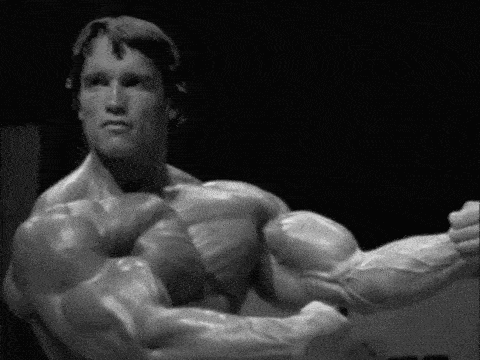
To build muscle, you need to create mechanical tension.
To create mechanical tension you need to train close to or to failure.
And the best way to train to build muscle will also be the best way to maintain muscle.
When you’re in a fat loss phase, your main goal other than losing fat should be to maintain muscle mass.
A nice side effect if you have a lot of body fat to lose is that you can actually recomp.
Even in a calorie deficit you can lose fat and build muscle as long as you have enough adipose tissue stores to fuel muscle gains.
Pretty neat huh?
With that explanation out of the way, let’s go over a sample PPL routine for building muscle and losing fat.
Execution Is Key
Your whole goal when trying to build muscle is to push close to failure and create as much tension as possible.
You don’t need to do a million sets to build muscle, if you do it means your execution can and should be better.
If you just go through the motions and aren’t controlling the negative, you’re missing out on easy muscle with lighter weights.
Each rep starts with a strong concentric action to use as many muscle fibers as possible.
Then, the second part of each rep has a controlled negative where you’re forcing the muscles to slow down the descent.
By doing this, you’re going to have much more efficient and productive training.
On top of that, your joints aren’t going to get super beat up just moving the weight through space.
This is the big difference between strength training and muscle building.
I’m strength training, you’re trying to generate the most force possible and minimize the fatigue at the same time.
This means controlling each rep and focusing on force production.
Building muscle is all about generating as much tension as possible on the muscles and fatiguing the muscles to the point where they’re forced to grow.
Pretty simple but it needs to be stated.
If you’re just moving the weights around and have to do 10-20 sets per muscle group to build more muscle, your mechanics suck.
Rep Range For Muscle Growth/Fat Loss
You can build muscle in any rep range as long as you’re training close to failure.
This means a set of 5 or a set of 20 will build just as much muscle.
However, the more reps you do, the more fatigue you’re going to accumulate.
That’s also why training heavier than sets of 5 isn’t a great idea for muscle.
Imagine doing sets of 3 to failure each week with more and more weight.

I guarantee you won’t be able to control each rep and your joints are going to hate you eventually.
On the flip side, if you’re only doing sets of 20 you’re going to create a ton of muscular fatigue and soreness.
So for this push pull legs split, I recommend sticking to the 5-8 rep range.
This is the universally agreed upon rep range that will build the most muscle without beating up your joints or crushing your recovery.
It’s pretty easy to set up too.
- Start with a weight you can do for a set of 5-8.
- For big compound movements, don’t go to failure but leave one rep in the tank. This can also be considered technical failure. Once your form breaks down the set is over.
- For isolation exercises, you can pretty much go to complete muscular failure forever.
- Each workout your goal is to try and beat the reps you did the previous week.
- When you get to 8 reps on an exercise, it’s time to add weight.
- However, what you shouldn’t do is stop once you get to 8 reps if you have more reps in the tank. Push it as hard as you can each week, focus on proper execution, and expect training to be hard.
Building muscle is hard so you should expect the process to be physically demanding as well.
Eventually, you’re going to plateau and not have the capacity to add more reps for multiple training sessions in a row.
When this happens, you can either deload, back the weight off, or do a combination of both.
If you choose to back the weight off, back it off 10-20% and try to break rep PR’s up to where you plateaued.
Check out my guide on what PRs are if you want to learn more about personal records.
By that point, you should easily be able to get past that weight you were stuck at.
When this happens, you’ll notice you not only got stronger but you got bigger as well.
It really is as simple as that.
Progress from doing a set of 8 at 200 lbs on the squat to a set of 300 for 8 and you’re definitely going to have bigger legs.
Pay attention to your technique, progress slowly, and beat your reps week after week.
Simple as that!
The breakdown for each workout is simple. You pick 1-2 exercises for all major muscle groups and work up to 1 hard set.
Push Workout
- 1-2 for chest
- 1-2 for shoulders
- 1-2 for triceps
- 1-2 for traps
Pull Workout
- 1-2 for upper back
- 1-2 for lats
- 1-2 for biceps
- 1-2 for rear delts
Legs Workout
- 1-2 for quads
- 1-2 for hamstrings
- 1-2 for glutes
- 1-2 for calves
3 Day Push Pull Legs Routine Example
As you can see, it’s incredibly easy to set up your own workout and never have to guess what to do again.
Plus, with a PPL routine, you don’t have to worry too much about your recovery from day to day.
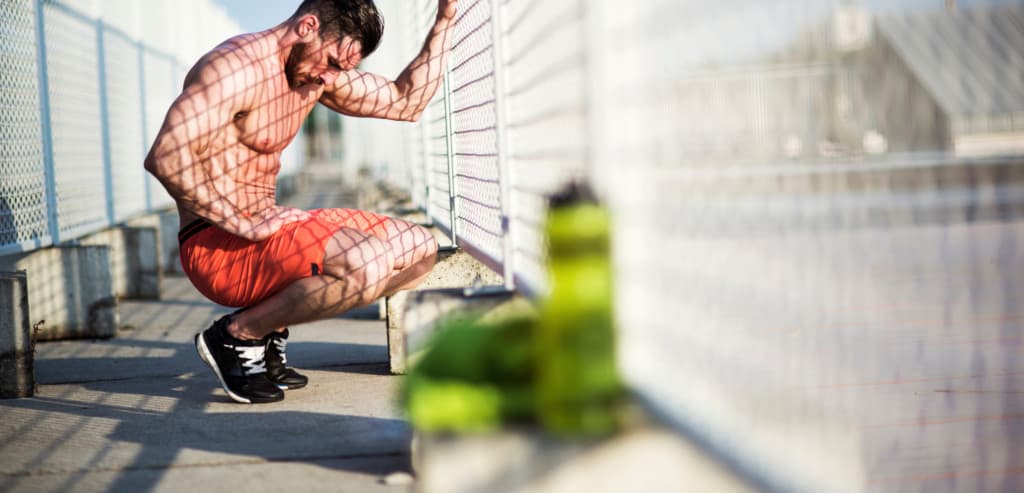
A 3 Day Push Pull Legs split is great to balance stimulus to fatigue. Plus your recovery is going to be easy to hit for a very long time.
Mainly, your volume should be low if you’re performing the exercises correctly and stimulating them by pushing close or to failure.
There’s also the fact that anything you do on your push day shouldn’t affect your pull workout day and vice versa with your leg day.
Suppose you’re only training 3-4 days a week. It’ll be even easier to get enough recovery, which is essential for growth.
After all, you don’t grow from training; you grow by recovering from training.
If you’re doing 6 training sessions a week with 10-20 sets done per muscle group, you’re not going to recover.
People say they have, but they would grow much faster and not be as beat up by doing less volume and pushing harder on your sets.
Just something to think about!
4, 5, or 6 Day Push Pull Legs Routine Example
When training 4, 5, or 6 days per week, we simply pick a second set of exercises to add to our first set.
4 Day Push Pull Legs
Here’s how this setup would look for each week training 4 days a week.
Week 1
- Monday – Push Workout 1
- Tuesday – Pull Workout 1
- Wednesday – Off
- Thursday – Legs Workout 1
- Friday – Push Workout 2
- Saturday – Off
- Sunday – Off
Week 2
- Monday – Pull Workout 2
- Tuesday – Legs Workout 2
- Wednesday – Off
- Thursday – Push Workout 1
- Friday – Pull Workout 1
- Saturday – Off
- Sunday – Off
Then you just keep rotating through each workout from there.
As long as you’re progressing and adding reps/weight week after week, I wouldn’t change anything.
5-6 Day Push Pull Legs
If you wanted to train 5 or 6 days a week, you’d have to make sure you nail your recovery and only pick 1 movement for each muscle group per workout.
Here’s how a 6-day Push Pull Legs split would look.
- Monday – Push Workout 1
- Tuesday – Pull Workout 1
- Wednesday – Legs Workout 1
- Thursday – Off
- Friday – Push Workout 2
- Saturday- Pull Workout 2
- Sunday – Legs Workout 2
I would only recommend a 6-day workout split to those looking to lose body fat and improve body composition.
It will be difficult for most people to recover from, which is necessary to continue building muscle mass.
As long as you keep the volume low (1-2 hard work sets per exercise), you should be fine.
If you start throwing in drop sets and doing tons of high rep sets to add more volume, you’re going to have problems.
Also, if you’re going to use 2 variations of each push pull legs day, here’s how I recommend setting it up.
Push Workout 1
- Chest compound
- Shoulder isolation
- Tricep isolation
- Traps
Pull Workout 1
- Upper back compound
- Lats compound
- Biceps isolation
- Rear delts isolation
Legs Workout 1
- Quad compound
- Hamstring isolation
- Glute compound
- Calf isolation
Push Workout 2
- Shoulder compound
- Chest isolation
- Tricep isolation
- Traps
Pull Workout 2
- Lat compound
- Upper back compound
- Biceps isolation
- Rear delts isolation
Legs Workout 2
- Hamstring compound
- Quads isolation
- Glute isolation
- Calves isolation
You can mix and match this any way you like, but I recommend setting up different focuses each day.
Each push day starts with either a chest or shoulder compound to overload the targeted muscles.
Then doing the opposite movement for isolation work will allow you to push the tricep work afterward.
I’m not a huge fan of loading up on a ton of presses 1 after the other, which helps fix that.
Heavy weights with high levels of control are difficult but it builds muscle faster than any other method.
Same thing with your pull workout.
The upper back and lats each get their focus at the beginning of each workout, depending on how you set it up.
This makes it easy to prioritize different things and keep training balanced.
For legs, having a quad-focused day and a hamstring-focused day definitely helps with doing quality work week after week.
With all of these setups, you can even change it so that you’re prioritizing weak points, which is one of the major benefits of using a push pull legs routine.
Let’s say you want to focus on the chest over shoulders for the next month.
Here’s how you could set it up!
Push 1
- Incline Barbell Bench Press
- Dips
- Lateral raises
- Pushdowns
- Traps
Push 2
- Dumbbell Bench Press
- Incline dumbbell flys
- Upright rows
- Overhead extensions
- Traps
As you can see, you load all of your chest compounds and isolation at the beginning, so they get all of the focus.
Then, you throw in some side delt work to isolate the shoulders but do not overdo it with heavy compounds as this will affect your recovery.
It’s pretty easy to set this all up as long as you follow a basic template and balance everything.
Training For Muscle Growth/Fat Loss
Training for muscle growth and fat loss is a little harder to figure out compared to strength training.
Picking exercises to train individual muscles instead of movements doesn’t have to be super tricky as I’m about to show you now.
The goal is to find exercises that train the targeted muscle groups through a full range of motion with excellent execution.
If you train each muscle group with a full range of motion and amazing technique, you will build more muscle.
If you train with quarter reps and sloppy technique, you will have achy joints and less muscle.
But you’ll be stronger, I guess?
I don’t know, I don’t understand ego lifters and never will.
The other thing to consider is the stimulus you receive from the exercises you’re doing.
If you’re doing a bunch of the “best” exercises, but you don’t feel like you’re growing much from them, barely get a pump, and aren’t progressing in sets and reps, odds are that variation isn’t the exercise for you.
Barbell rows are one of the best exercises you can do to build the upper back muscles, but if you are struggling to add reps and it doesn’t feel right for your body, it’s probably not the best option for you.
I have multiple clients who have had to switch out numerous exercises just because they didn’t feel right.
Even if your execution is perfect, they just don’t feel natural and don’t benefit your physique much.
So it’s crucial to find the exercises that work best for you and go from there.
In general, if you feel the muscles working, you’re able to add weight and reps for a long time, and you’re growing, it’s a good fit, and you should keep it!
Here are the major muscle groups you should be training directly with compound and isolation exercises to build the biggest and best physique possible!
- Chest
- Side delts
- Triceps
- Traps
- Upper back
- Lats
- Biceps
- Rear delts
- Quads
- Glutes/Hamstrings
- Calves
This is where knowing your body will benefit you more than just following the same workout split that a pro bodybuilder uses and calling it a day.
Cookie-cutter training plans are a dime a dozen, which is why following a basic template and picking your exercises is so essential for progress to occur over a lifetime.
Plus, your form with each exercise should be strict and solid to maximize muscle growth.
Progressive Overload For Maximum Progress
The number 1 most important factor to pay attention to for progress to occur is progressive overload.
Hence the name progressive.
Progressive overload is, in its simplest terms, putting more stress upon your body to achieve the desired result.
A training program for strength or muscle growth has a lot of the same factors but how you go about getting those results is slightly different.
Progressive Overload For Strength
For strength, you want to stay away from failure and generate as much power as possible for each rep.
Even when the weight gets heavy, your goal is to move the bar as fast and forcefully as possible.
Especially on your warm-ups!
By doing this, you’ll build your fast-twitch muscle fibers, which are responsible for moving your body explosively.
If you lift slowly, including on your warm-ups, it will be much harder to improve your total body strength.
The other thing to pay attention to is your recovery and limiting your fatigue as much as possible.
Strength training shouldn’t be done to failure. At least 1-2 reps away from failure is a good goal to shoot for.
It’s important to remind you that working with weights heavier than 3 reps per set is only necessary, leading into a powerlifting meet.
Getting stronger in the 3-8 rep range will give you a nice blend of strength and muscle, perfect for long-term progress.
However, you can still get stronger by improving your 10, 15, and even 20 rep max.
If you start deadlifting 200 for 5 and 6 months later, you can do 200 for a set of 20; you got stronger.
Getting stronger in all rep ranges still qualifies as strength training after all.
Let’s go over how to progress over time to build muscular strength!
I like to start as light as possible and progress as slowly as possible.
The lighter you start, and the slower you progress, the longer you’ll progress.
On top of that, you’ll get stronger in various rep ranges, which is excellent for improving muscular endurance, strength, and power.
Let’s use the barbell bench press as an example.
Start with a weight you can do for 10 reps and increase the weight by 5 lbs until you drop down to 5 reps.
- Week 1 – 200×10
- Week 2 – 205×9
- Week 3 – 210×9
- Week 4 – 215×8
Once you get to the bottom of the rep range, it’s time to take a Deload for that movement.
Then you start back up the following week by subtracting 10-20% and pushing for rep PR’S.
Let’s drop 10% for this example.
- Week 1 – 215×15
- Week 2 – 220×14
- Week 3 – 225×13
- Week 4 – 230×12
From this example, you can see it’s incredibly easy to progress for long-term progress without doing a ton of sets and reps.
Work up to 1 working set and keep trying to do more weight over time.
Once you plateau, back the weight off 10-20% and break rep PRs back up to the plateau.
Simple as that, and it works!
Back Off Sets
If you need to add more volume for specific movements that keep stagnating, simply add a back off set or 2.
Here’s how this looks with the overhead press, which commonly needs more volume than other barbell movements.
- Week 1 – 150×10, 135×12
- Week 2 – 155×9, 140×12
- Week 3 – 160×8, 145×11
- Week 4 – 165×7, 150×10
Pretty basic setup, but it allows you to get in extra volume on the movements that need it.
You can do multiple backoffs at the same weight as well.
- Week 1 – 150×10, 3 sets @135
- Week 2 – 155×9, 3 sets @140
- Week 3 – 160×8, 3 sets @145
- Week 4 – 165×7, 3 sets @150
You keep adding weight to the top set and back off sets week after week as long as you’re hitting 5 reps or more per set.
Then you deload once you hit a plateau, back the weight off, and build back up.
Strength training is incredibly simple but just make sure that you’re keeping reps in the tank.
By not pushing close to failure, you’re able to maintain your technique and recover properly.
Progressive Overload For Hypertrophy
Now that we have progressive overload covered for strength training let’s finish off with how to progress for muscle hypertrophy.
It’s pretty simple as I’m about to show you!
Unlike strength training, which focuses on keeping reps in the tank, training for muscle growth requires pushing as close to failure as possible.
This creates mechanical tension, which is the tension that’s created once you get to those last couple reps of a set, and your reps slow down to a crawl.
As Arnold has been famously quoted,
“The last three or four reps is what makes the muscle grow. This area of pain divides the champion from someone else who is not a champion. That’s what most people lack, having the guts to go on and just say they’ll go through the pain no matter what happens.”
Arnold Schwarzenegger
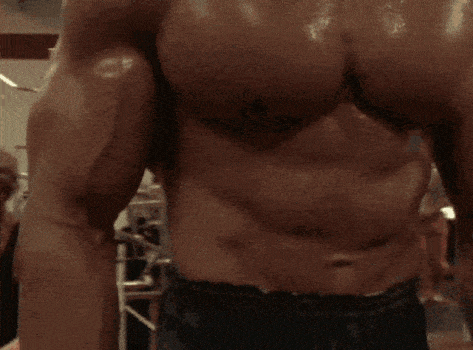
Arnold knows a thing or two about what it takes to grow. Those last couple of reps are what cause the muscle to grow. If you aren’t pushing close to failure, you’re not training optimally.
Muscle growth isn’t caused by increasing your volume to crazy levels even though Arnold did both.
It’s caused by generating as much tension in the muscles as possible, and those last couple reps of every set create the stimulus for muscle growth to occur.
This means pushing as close to failure as you can and getting stronger in whatever rep range you choose.
I stated before that the 8-12 rep range is the optimal range you should be shooting for, but you can build just as much muscle in the 5-20 rep range.
As long as you’re pushing hard and try doing more reps than last time, you’re on the right path.
Here’s how progress should look for the squat.
- Week 1 – 300×12
- Week 2 – 305×10
- Week 3 – 305×12
- Week 4 – 310×11
- Week 5 – 310×12, etc.
It really is as simple as pushing to one top set and doing more reps than last time.
If you don’t get to 12 reps this time, keep the same weight the following week and try to beat whatever reps you did.
Keep doing this for weeks, months, and years. Eventually, you’re going to be doing 50+ lbs on specific exercises and building more muscle with this simple approach.
You don’t need a bunch of sets to build muscle, so don’t fall for the hype.
Here’s all you need to progressively build muscle for life.
- 1-2 sets per exercise
- 1-2 exercises per muscle group per workout
- Get stronger in the 5-20 rep range with the majority of your work in the 8-12 rep range
- Push until form breaks down on compound exercises and to failure on isolation exercises
- Eat to grow
Following these guidelines with a PPL routine will allow you to build muscle for an extended period.
Just follow the basic template, pick exercises that work for your individual structure, and progress the correct way depending on your goal.
Frequently Asked Questions
Conclusion

I hope this comprehensive guide showed you how to use and setup your own push pull legs training program.
Now, I’d like to turn it over to you!
What’s the #1 tip or workout split that you want to try first?
Are you going to start working on strength and train 3 days per week? Or perhaps you’re going to train 6 days a week and focus on fat loss for a while?
Or maybe you still have more questions before actually starting your plan!
Whatever your next step is, let me know by leaving a comment below right now!
Thanks for reading and I hope you all have an awesome weekend!
Until next time,
-Dante Redgrave